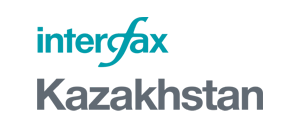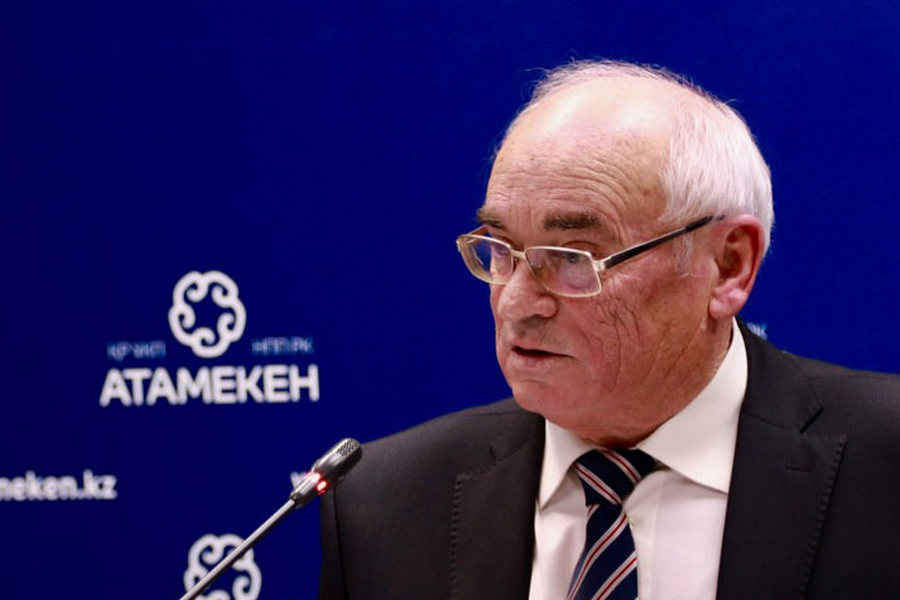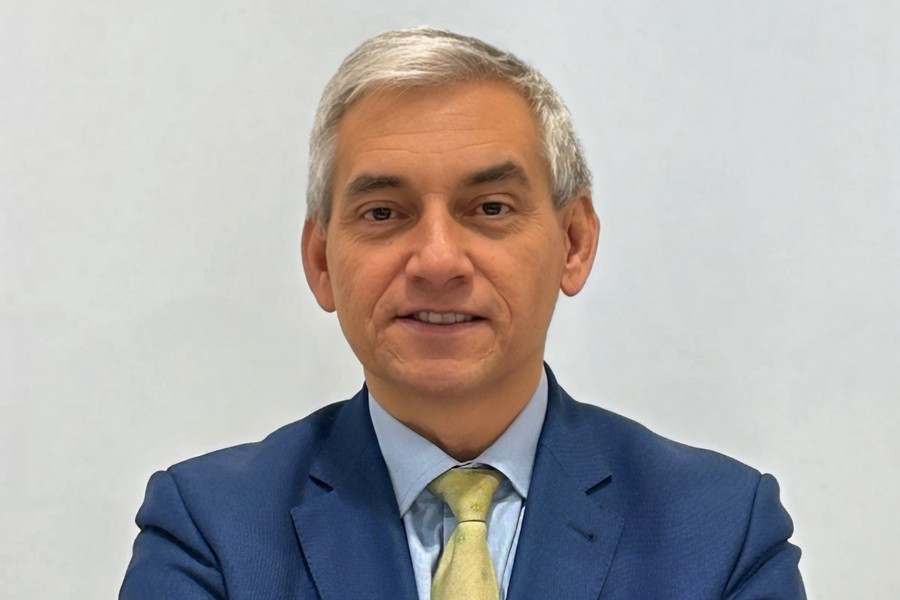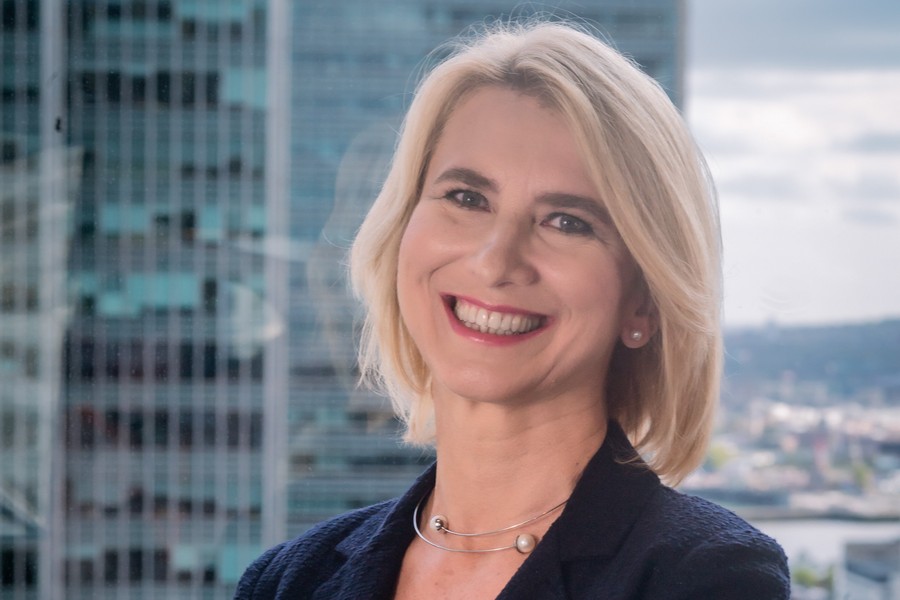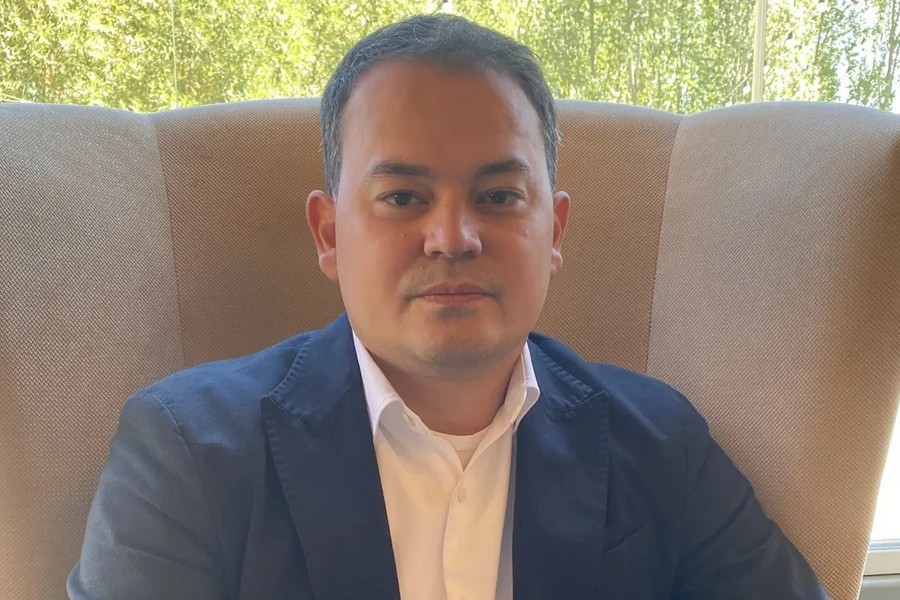Chairman of the Management Board of JSC Development Bank of Kazakhstan Bolat ZHAMISHEV:
WE PLAN TO INCREASE THE SHARE OF BORROWERS IN NATIONAL CURRENCY
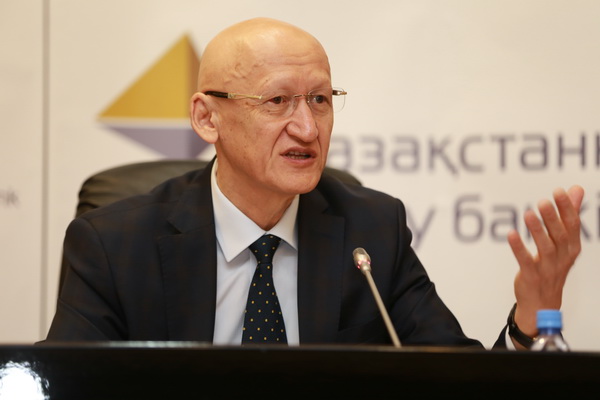
There is a surplus of short-term tenge liquidity on Kazakhstan’s market, but still there are not enough investors who are ready to invest in infrastructure as well as in projects, risks under which would be proportionate to a proposed yield. Development Bank of Kazakhstan is increasing its loan portfolio while simultaneously setting out its own priorities for the selection of a borrower, industry and sectors of industry. Bolat ZHAMISHEV, Chairman of the Management Board JSC Development Bank of Kazakhstan (DBK), told how financing of projects in Kazakhstan would develop, about currencies and investment "thresholds", requirements for borrowers in an interview with Interfax-Kazakhstan.
- How much in general does DBK now provide for investment projects in Kazakhstan?
- We had a loan portfolio of 1.5 trillion tenge (332.75 tenge/$1) as at November 1. This is a fairly large portfolio. The volume of lending under 46 investment projects totals 1.248 trillion tenge, and 116 billion tenge for 14 export transactions, 141 billion tenge for inter-bank lending, etc.
We actively provide loans to the mining and metallurgical industry, its share in the portfolio is 34.6%. We are financing the modernization of our three refineries, they also account for a large share - 34%. Transport, warehousing - 6%. The other industries, primarily, the manufacturing one, make up 25.3%. This is in total, although the manufacturing sector accounts for the largest share by the number of projects.
Projects in the manufacturing industry are smaller in size than loans for oil refineries and mining enterprises whereas we do not finance production itself, we finance projects on building, for example, ore-recovery plants.
Investment projects and export transactions are distributed by region as follows: Atyrau oblast - 22%, Pavlodar - 18%, Aktobe - 14%, the other regions - 46%.
Projects in the manufacturing sector account for 84.6% of DBK's gross loan portfolio. If the volume of the portfolio of investment projects and export transactions in Kazakhstan’s manufacturing sector is to compared to the same of all commercial banks in Kazakhstan (taking into account long-term loans with duration of 1 year onwards), then the ratio made up 131% in September 2017.
DBK's investments worth 91.9 billion tenge in projects in the manufacturing industry made up 15.3% of the volume of all investments in fixed assets of Kazakhstan’s processing enterprises that totaled 599.4 billion tenge in January-September [this year].
- Have the minimum and maximum funding thresholds been established?
- The current "threshold" for financing investment projects is 7 billion tenge whereas 3 billion tenge for the food industry. The minimum loan for export transactions is 1 billion tenge. The "thresholds" for project lending were revised by DBK in October 2016 given borrowers’ current needs and also in order to increase the effectiveness of institutional support for the diversification of the country's economy.
- How, by whom, in what way is it determined that the project will be financed by DBK, not EDB [Eurasian Development Bank]? Do borrowers go to DBK for the tenge liquidity after they failed to get financing from EDB?
- The mandate of the international Eurasian Development Bank differs from us in as follows: we finance Kazakh enterprises, and they finance the projects of the EDB member states. As the banks that finance investment projects, we are, to some extent, even competitors, but interacting with EDB with regard to projects we propose that they try to find opportunity for large projects to jointly finance on the basis of syndicated loans or co-financing.
We even considered a number of projects, but we did not finance them together although these discussions on major projects, under which we would like to share risks, are continuing.
To a greater extent, of course, the customers themselves influence this. The two banks with different corporate processes and procedures, this is inconvenient for a client. He would be fully satisfied with a syndicated loan, when one bank arranges for a loan, and the second only joins on the terms offered by the deal arranger. We are practicing this opportunity with EDB, we would like to implement it.
- And for what projects, can this be clarified?
- We discussed projects in the mining and metallurgical industry, that is, major projects, where it makes sense to share risks. For us it is, indeed, relevant. We would gladly share the risks for a number of projects with which we are approached.
But under such projects, most often we finance not the entire deal but its part.
We financed three very good projects last and this year. The completion of the construction of a mining and processing plant at the Aktogay copper deposit last year, the Jayrem ore mining and processing plant this year.
We co-financed these projects, there were several borrowers and EDB could have been one of them as well.
- How do you assess the role of DBK in Kazakhstan’s economy?
- DBK has a fairly large share, if we take into consideration the size of capital investments in the manufacturing sector in recent years. In this sense, we certainly have had a significant impact on the development of Kazakhstan's economy, more precisely, on the development of the new economy and new enterprises. Since the establishment, we have invested 2.4 trillion tenge [in] 92 projects, some of them, it should be admitted, were not successful. Yes, such [things] occurred in the bank's 16-year history the, but by and large the projects worked.
If we talk about the current period, then we are quite actively increasing the loan portfolio. In less than 4 years, it has increased 4-fold whereas the quality of the loan portfolio has grown, that is, the reliability of borrowers as a whole has increased. In particular, in 2016 we financed 19 projects worth a total of 385 billion tenge. The total design capacity of these enterprises is 5% of the manufacturing sector’s output. Exported manufactured products totaled 311 billion tenge or nearly 8% of the total volume of Kazakhstan's non-resource exports.
DBK is one of the key operators of the new industrialization program. Within the First Five-Year Plan (2010-2014), DBK financed 36 projects with a total value of 3.3 trillion tenge providing loans totalling 1.7 trillion tenge.
In 2015-2019 it is planned to secure at least 28% (1.266 trillion tenge) of the planned volume of investments in the fixed capital of the manufacturing industry (out of 4,478 trillion tenge). As a result, by 2020 DBK expects to achieve annually sales of finished goods nearing 1 trillion tenge from the manufacturing industry, products exports will near 166 billion tenge, or 2.9% of the target benchmark planned under the industrialization program for 2019 (5.68 trillion tenge), about 85 billion tenge will paid in taxes into the budget from the implementation of projects and 7,000 new jobs will be created.
Our active participation in lending to the manufacturing industry is possible only with the state budget support for our funding. In 2010-2014 we received 75 billion tenge from the budget and should have added 150 billion tenge from the market to them, that is, in order to mix up the budget money with money from the market. A total of 225 billion tenge is what we had for funding in the first five-year period.
Now we have received 75 billion tenge, later [another] 80 billion tenge. In addition to these 155 billion tenge we will have to raise the same [amount] from the market totaling 310 billion tenge – that’s the funding that we would have for the implementation of the second five-year projects.
- Landmark projects, it seems to me: in December 2016, DBK opened a $ 300 million credit facility for KAZ Minerals to complete the construction of a concentrator for sulfide ore processing at the Aktogay deposit in East Kazakhstan region for 8.5 years, in May 2017 for the modernization of the Shymkent oil refinery in the amount of $ 932 million for 13 years, and in October 2017 - a credit facility for Kazzinc in the amount of $ 100 million for the construction of new Jayrem GOK [mining and recovery plant] for 7 years, at what stage are they now?
- The Aktogay project is put into operation; we financed the final part of the [site] works. The Zhayrem GOK, on the contrary, is at the initial stage of implementation. The Shymkent refinery is in the process of modernization, which it began without funds borrowed from us. This year we financed this project only in May.
- Asia Avto Kazakhstan is expected to get financing from DBK for the construction of a car plant. Will [the car maker] get it? What is taken into consideration when a decision is made to allocate funds?
- In January they approached us with an application, we considered this project, but it was big enough, and the project economy had expected cheaper financing than DBK provides for given the state support. Therefore, we could not provide support for such a project but not because of this, but mainly because of their own plans adjustment. This enterprise currently is doing construction [works] at its own expense, plus they significantly adjusted their plans since they work with [Russia’s] AvtoVAZ.
Recently we met again. There is a new project, much smaller by cost, common for projects in the manufacturing industry by rate. Now we are awaiting all of these proposals in order to consider them.
- What other major private and state companies are you planning to cooperate with and under what projects?
- Given that Asia Avto Kazakhstan itself declared its intention to build the plant, I said about that. In general, we give detailed information on projects when we are already taking decisions and are proceeding to implement [such projects].
Now I can only say that DBK’s portfolio of potential projects (pipeline) has 28 investment projects. That is, there is no shortage of projects. Of them, 11 [projects] totaling 563 billion tenge are part of the industrialization program and 17 other projects worth 720 billion tenge are in the sectors such as energy, infrastructure and others.
In addition, currently there are 6 pre-export transactions in the pipeline worth 33.8 billion tenge - the requested amount of financing from DBK.
- What is the currency structure of DBK's loan portfolio to date? Did the tenge devaluation affect the loan portfolio quality?
- To date the share of loans in tenge in the loan portfolio is 44.7%, and it was 20.5% in 2013. We have more than doubled the share of loans in national currency and thereby reducing the currency risks, but not even this is most important, the most important [thing] is how it happened.
After these significant devaluations, when the liabilities were denominated in foreign currencies and the projects did not have foreign currencies and could not absorb currency risks, their liabilities almost doubled. Following the devaluation, business profitability, of course, does not grow. It is clear that projects that could not absorb currency risks, but had loans in foreign currency, had to be restructured. We were busy with this in 2015-16. We restructured into tenge loans sensitive to currency risks.
Now we are keeping to the policy not to finance projects in foreign currency that cannot in anyway absorb currency risks. Thus, we have minimized the risks relating to possible changes in the exchange rate between the national and foreign currencies.
- In January-June 2017 DBK posted a net profit of 2.873 billion tenge or 3.8 times less than in the same period in 2016. What impacted the sharp decline in profits? Is profit increasing an objective for DBK?
- DBK is a development bank, we do not have the objective to maximize net income profit from our activities. Therefore we ensure the break-even activity of our bank and our profits can change. This is not a benchmark. We are a stable bank with the sufficient capital, good quality loan portfolio, good credit rating. If the objective was to increase profits, we could achieve this, but we do not set ourselves such an objective. The only [objective] we set as a minimum objective is the break-even activity.
In the first half of 2017, DBK's net profit amounted to 2.874 billion tenge, in the three quarters – 7.189 billion tenge.
- What objectives are planned by DBK for 2018?
- If we talk about our development plan, then certainly, figures dominate the volume of financing, because banks exist in order to finance the economy. We must provide over 400 billion tenge in funds, maintain the share of the loan portfolio with regard to total assets at 60% and the level of provisions at no more than 10%.
We plan to increase the share of national currency borrowers. When selecting projects for financing we need to supervise so that they fully comply with the industrialization program, improve their business processes, improve corporate governance.
- From October 26, 2016 to October 25, 2017 you headed up the Interbank Association Council of the Shanghai Cooperation Organization (SCO) and intended to support Kazakh exporters in the non-primary sector with loans in US dollars from $ 10 million to $ 50 million for up to 9 years (banks - participants in the SCO Interbank Association Council acting as banks for companies importing Kazakhstan-made goods). Did you manage to implement what had been planned?
- Yes, in October 2016 we took over the chairmanship. I believe that we have coped with this quite successfully. We initiated [this], and for the first time in June 2017 this took place - a joint meeting of the Business Council, which unites the business, after all, the banks exist in order to finance the business. Following the meeting with the aim of stimulating bilateral exports framework agreements on cooperation between DBK, Kyrgyz Bank Payment Saving Company, Russia's Vnesheconombank and Belarusbank were signed.
We believe that it is possible to improve interaction in the SCO Interbank Association Council if we exchange experiences. The Development Bank of China and Vnesheconombank of Russia actively pursued this. The other countries were less active.
We held a seminar on risk management for the SCO-based banks here in the bank, presented three schemes of financial support for non-resource exporters: exporters' pre-export financing, export financing of an importer who purchases products in the country of export and financing of a non-resident bank for further financing an importer.
Perhaps, most importantly, we brought up before the SCO Interbank Association Council specific issues of ensuring an increase in exports by each of the participating countries since the exports support is the objective of any development bank, including our bank, and we are actively working with this tool both in terms of financing our own exports, and in terms of pre-export financing. Our proposals on the mechanisms for stimulating mutual trade within the SCO space were backed.
DBK's initiatives also envisage the possibility of participation of national insurance companies of the SCO countries in insuring against emerging risks.
- What share of incoming applications for financing does DBK eventually finance? Could you assess the growth prospects for the manufacturing industry in the next five to ten years?
- Since the beginning of the year DBK has received 34 loan applications for examination. As at November 9, 11 applications were rejected, it was decided to finance investment projects under 9 applications and export transactions under 4 applications and loan agreements were signed with regard to almost all of them.
The main reasons for rejection of loan applications: application non-compliance with the DBK requirements, when the creditworthiness of an applicant is not confirmed, there is a lack of collateral - less than 30% of hard collateral, required documents were not provided, the applicant himself refused to finance.
Often an applicant submits an application not being ready and in order to sort out everything as the “play progresses”. Our procedures envisage determining the company's willingness to finance - filling out a questionnaire. Filling out the questionnaire the applicants themselves answer the question – whether they can finance or not. Plus, we divided the bank expert assessment into two stages. Those who passed the first [stage] may not go through the second stage. To the second stage we took all that is related to the borrower’s additional costs, various expert assessments. That is, we work with documents the borrower prepared at the first stage, and when a legal, economic, technical expert assessment is required, we take that to the second stage, so that the borrower initially did not incur unnecessary costs because we do not guarantee financing at the time of applying.
- Are you ready to cooperate only with EDB or with the other financial institutions as well for lending?
- We met with second tier banks so they knew about our readiness for joint financing. We are interested in sharing risks with development banks and EDB first of all, with second tier banks - their interaction with enterprises, their monitoring of enterprises. We believed that co-financing with second tier banks would help better supervise the activities of our borrowers. Now the situation in banks is improving to some extent but recent years have seen a big collapse in the tenge liquidity market. The banks did not have access to cheap long-term liquidity. We have a high proportion of loans provided to the manufacturing industry not because that DBK is so large but because banks shrank the issuance of long-term loans to enterprises. Tenge resources are still very expensive on the market.
- And only with EDB from among the development banks?
- No. We co-financed jointly with Development Bank of China, for example, the Moinak HPP [power plant] project. Major projects in the mining and metallurgical sector - the bulk of loans for [them] are not from DBK. As for the Aktogay GOK [mining and processing plant], Development Bank of China is a principal lender, our share is only $ 300 million.
We have memorandums with a fair number of foreign banks. We have opened credit limits worth $ 2 billion, but their disbursement depends on whether businesses will come to us with projects in which the banks of those countries, for example, of Poland etc., would be interested. If there is a project with a Polish component, then it is clear that funding - under the guarantee of export agencies - could make borrowing less expensive and DBK could then disburse these credit facilities. That is, disbursement depends on the projects with which borrowers will approach us.
- Thank you for the interview!
December, 2017
© 2025 Interfax-Kazakhstan news agency
Copying and use of these materials without reference to the source is prohibited
Archive
